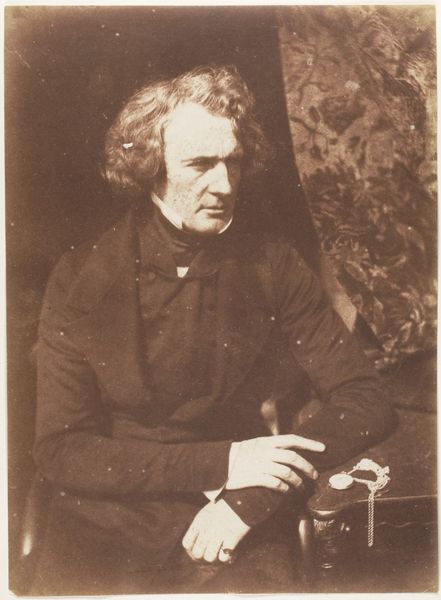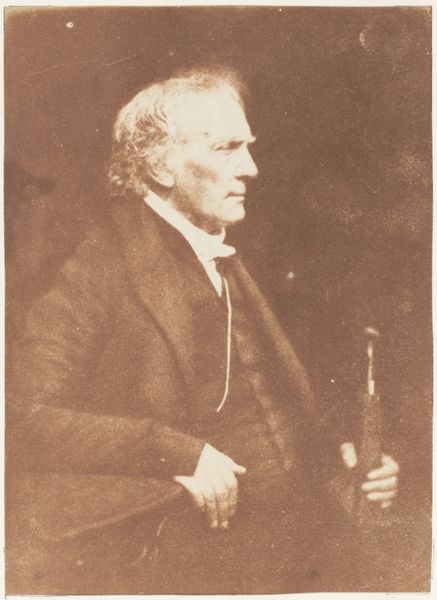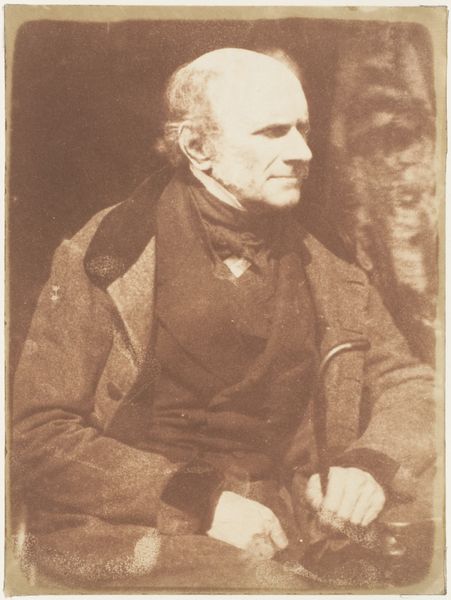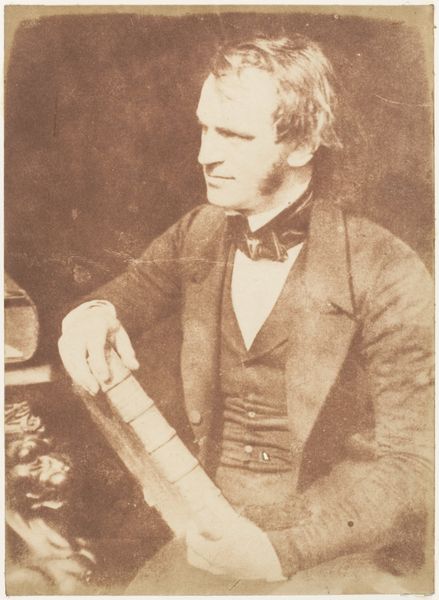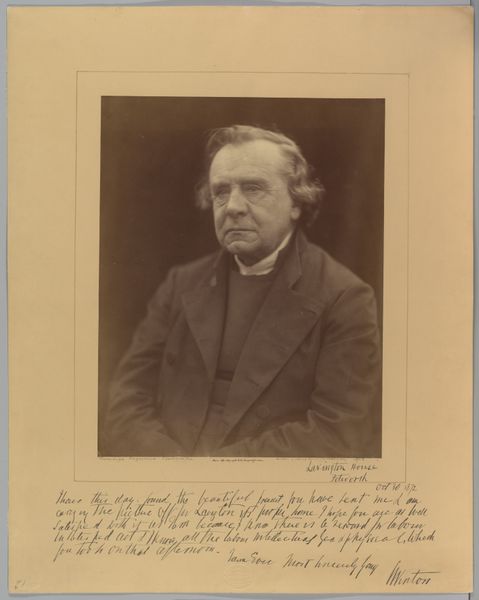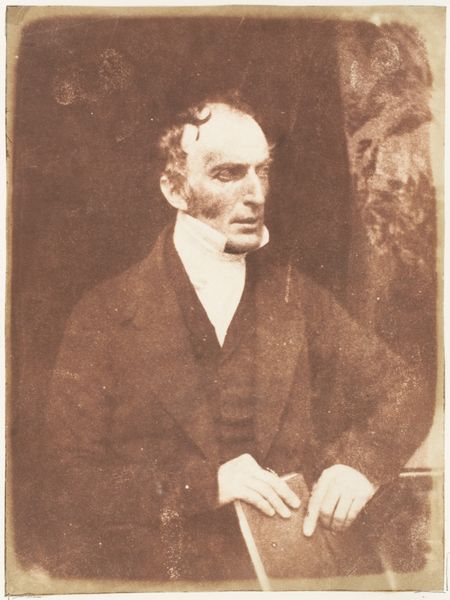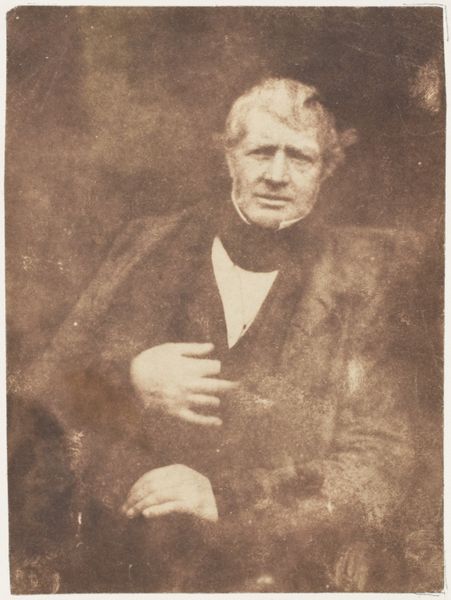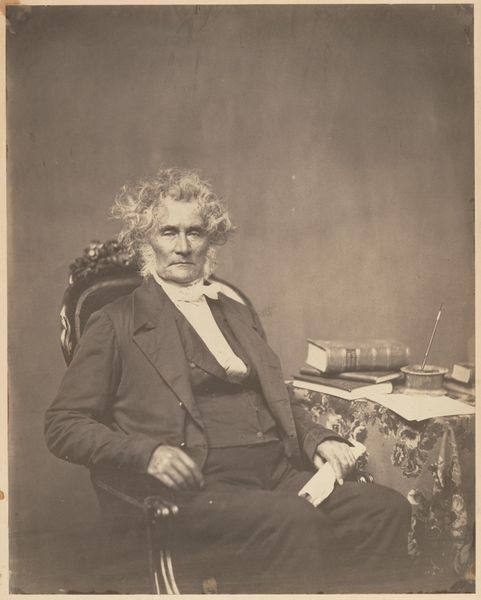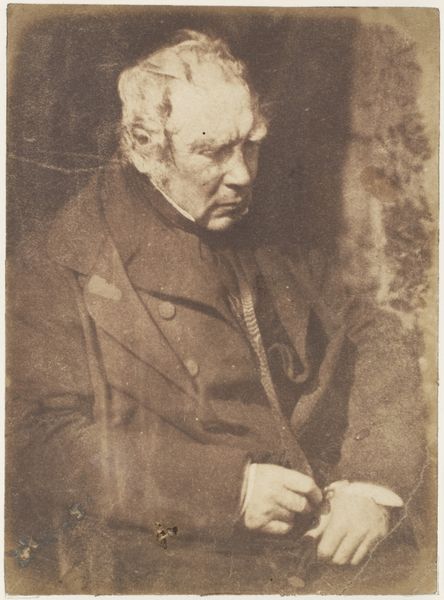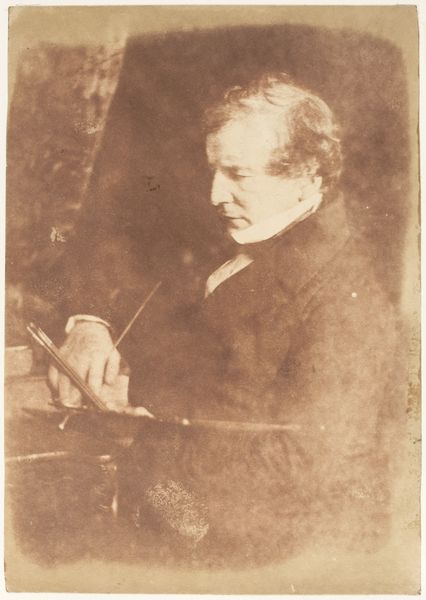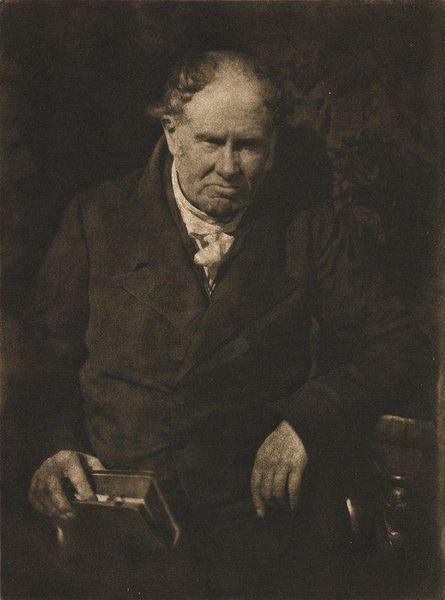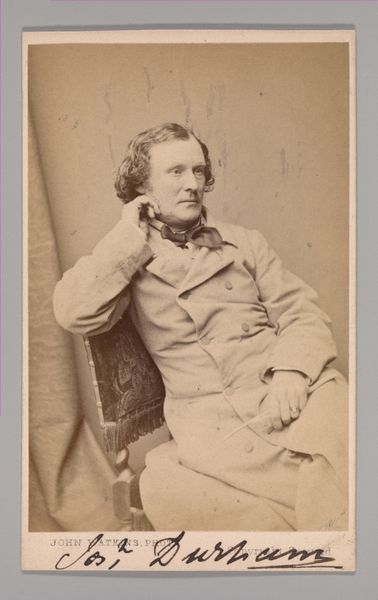
print, daguerreotype, photography
#
portrait
#
16_19th-century
# print
#
daguerreotype
#
photography
Dimensions: 20.2 × 15.1 cm (image/paper); 30.7 × 24.4 cm (mount)
Copyright: Public Domain
Curator: Here we have David Octavius Hill’s portrait of “Sir John McNeill,” a daguerreotype likely created sometime between 1845 and 1900. What strikes you about it initially? Editor: The texture, undeniably. It's almost marbled due to age and wear, like looking through cracked varnish. And then that diffused light – a hallmark, surely, of early photography? It lends the sitter a pensive, almost melancholy air. Curator: Precisely. The photograph itself is a fascinating object. As a print, its materiality reflects its age and handling. Hill’s process, rooted in early photographic techniques, highlights both his ingenuity and the inherent limitations of the medium at the time. Editor: And McNeill himself? The composed gaze, the slightly formal attire… I sense a man of some authority, carefully positioned within a visual language of power and respect. That elaborate watch chain certainly speaks volumes! Curator: McNeill was indeed a significant figure – a diplomat and administrator with extensive service in Persia. This image functions as more than just a likeness; it embodies Victorian ideals of leadership. His pose is carefully constructed, meant to project composure and intellect. Editor: It's intriguing to consider the dynamics at play. Hill, the artist, shaping the perception of McNeill, the public figure. This image isn't merely a record, it's a narrative, a crafted representation meant for a specific audience and purpose. Were portraits like this commissioned frequently? Curator: Certainly, portraiture served a critical function for elites in this era, to broadcast not just their faces but the legitimacy of their status within society. The Art Institute's acquisition of this portrait enriches our understanding of 19th-century power dynamics as well as early experiments within photography itself. Editor: I see that play between art and artifact more clearly now. The inherent visual drama within the subject captured by Hill reflects larger themes and cultural undercurrents. Curator: Indeed, studying "Sir John McNeill" provides not only an intimate lens into the man himself but invites discourse on empire, power, and representation during the burgeoning age of photography.
Comments
No comments
Be the first to comment and join the conversation on the ultimate creative platform.
